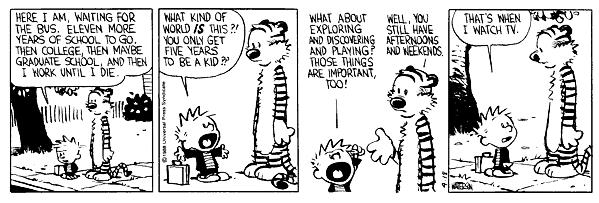Opportunity Cost in the Dental Practice, or Why Did I Spend All My Money on Alginate When I Could Have Seen the Stones?!
Danny: Thirteen million and you drive this piece of $#^+ cross country to pick me up?
Rusty: Blew it all on the suit.
“Ocean’s Eleven” (2001)
I’m gonna say a few things, I’m gonna say some bad words, and you’re just gonna have to deal with it.
TONY SOPRANO
“Opportunity Cost” is one of those terms you learn when you get a MBA. Someone says to you, “The value of the best alternative forgone, in a situation in which a choice needs to be made between several mutually exclusive alternatives given limited resources”. (Opportunity Cost, 2013) And you say, “What is ‘Opportunity Cost’?” Then they give you an MBA. And you now know jargon that makes other people say, “Wow!”
Let’s look at a simpler definition of OC. According to the dictionary, Opportunity Cost is the “loss of potential gain from other alternatives when one alternative is chosen”. (Opportunity Cost, 2013) In the case of Rusty, the opportunity cost was $13,000,000 minus whatever the usual cost of a suit should be. If Rusty is a real snazzy dresser and he wears $5000 tailored suits, then the opportunity cost is $12,995,000. That’s how much potential gain was lost when he blew it all on a suit. I’m sure you could think of about 13,000,000 things you could spend that kind of money on.
The fact is, that much more than that is blown daily by dentists around the world on “specials” or “promotions” (speaking cumulatively, not individually, I hope!). So, like Tony Soprano, I’m gonna say a few words here that your distributor rep won’t want to deal with; and, having been a distributor rep in the past, I know whereof I speak.
How much inventory do you need on hand in your dental office? Have you ever asked yourself that question? I have the answer, “As little as you can practically get away with”. If you have your ordering under control, and that is the caveat, there is no reason to have more than a month’s worth of stock on hand at any one time. Your minimum should be no less than about 2 weeks, because 99.9% of the time, your distributor will fill a backorder within that time.
Let’s look at what could be a common example in the dental practice:
Supplier HS normally sells Gluma™ Comfort Bond & Desensitizer single-dose refills for $152.99.
Let’s assume that a refill of Gluma is a 1-month supply for your office. HS has a promotion on this product: buy 12, get 3 free.
Now, your price per unit is 12 x $152.99 = $122.39/Kit
So, you’re thinking, “Like a bandit, I saved $30.60/kit. That’s a 20% savings!”
OK, so. Let’s look at where opportunity costs come in.
You now have 15 months’ worth of Gluma.
15 x $152.99 (Regular Cost) = $2294.85
Promotional cost = 15 x $122.39 = $1835.85
Difference? You saved a whopping $459! Could be a weekend in Vegas for some folk. But, wait a minute, what is your real cost on this?
Opportunity cost = (what you need) - (what you saved on what you need) - (what you paid for what you got)
What you need: 1 month supply = $152.99
What you saved on 1 month supply = - $30.60
What you spent = -$1835.85
Opportunity cost = $1713.46
In other words, you tied-up over $1700 that you could have used to purchase something else. That money is GONE. (Bleiweiss, 2014)
Now this doesn’t take into account something else we’ll talk about in the future: Carrying Cost. How much to buy a new fridge to store all that stuff? What’s the shelf-life?
Anytime you spend money, because the money you have access to is limited, there is an opportunity cost. You need to determine if that opportunity cost is significant to you. Whether you realize it or not, if you’re like me, you consider opportunity cost every day. Do I get one pound of steak or 3 pounds of ground beef? Do I buy a new lawnmower or do I save it for that new bike I want. Unfortunately, for many folk, it can come down to food or rent?
I setup a dental practice with the Grasshopper Mouse inventory control system. When I did an analysis of the practice’s inventory, they had more than $70,000 in stock in the office. If you figure that supplies should cost no more than 6% of your gross, then, if they are producing a million dollars per year, they’d have $10,000 more in stock than they should spend in an entire year on supplies. “But, hey, they offered me a bunch of free stuff if I stocked-up.” If that is a million-dollar practice, their opportunity cost that year is (drum roll) approximately $65,000.
Get a good inventory control system and control your inventory. Controlling spending is much, much more than shopping for the lowest price (something we’ll discuss when we talk about Hidden Costs). You can’t control what you don’t measure. Opportunity cost is so important, but never truly considered when there are stars in your eyes over a great promotion.
Works Cited
Bleiweiss, R. K. (2014, October). Grasshopper Mouse An Inventory Control System Designed for the Dental Practice.
Opportunity Cost. (2013, January). Retrieved November 12, 2014, from Wikipedia: http://en.wikipedia.org/wiki/Opportunity_cost

